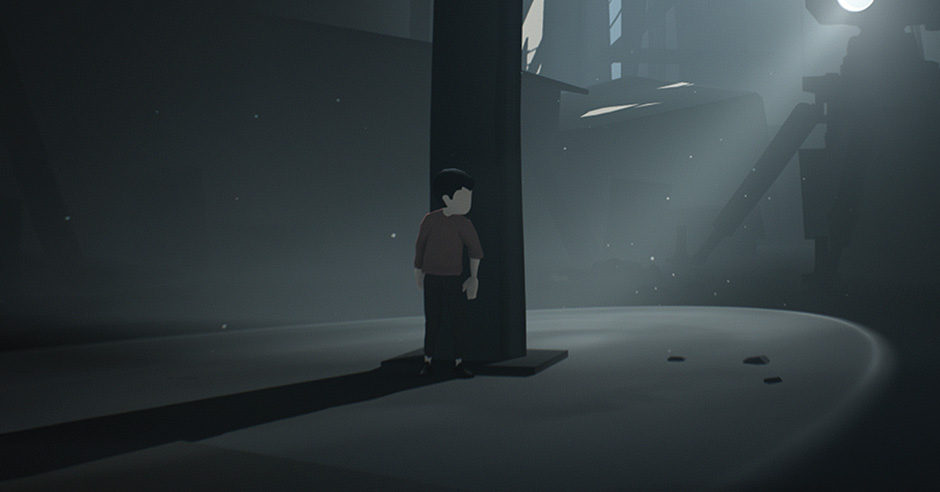As Justin Bieber might ask after playing one of their strange, dreamlike art-romp games. Hey Playdead, what do you mean?
Sadly, Arnt Jensen, the lead man behind Limbo and their latest brain-root, Inside, isn’t exactly upfront with defining his games. He prefers to leave it to the player to interpret. Limbo wasn’t the most straight forward game out there, but he still wishes he left less clues to the game’s real meaning. So expect Inside to be particularly ambiguous.
In the week since Inside’s release, there have been a handful of interesting theories crop up as to what it all means. So, if you haven’t played Inside, here’s your last warning to turn back. Proceed at your own peril. Not that most of what follows will mean anything to you right now, it one day might. Turn back now if you don’t want to read any spoilers.
Here are a few of those theories.
A Slave New World
Mind control is a feature at the forefront of Inside. We first see evidence of it as the boy wanders through a farm littered with dead pigs. It isn’t made clear what the swine died of, but attached to their lifeless bodies are writhing slugs, not dissimilar to those that feature in Limbo. Once attached, they render the host unable to control themselves.
As the boy passes one of the pigs, who it turns out what just treating himself to a lie down, it stirs upright and begins to charge. After a few cunning evades, the boy manages to pry the slug from the pig’s rear. It slumps into a zombified heap, shiftless in its demeanour. The use of pigs in early prototyping for mind control seems logical; they’re used in our every day pursuit for scientific advancement.
So, knowing that mind control is a product of Inside’s world, it’s entirely plausible that it’s an on-market product, available to the highest bidder. Throughout the game, we see a great many nullified, brain dead drones hunched over in a slumber, on the ready to be stirred into action by anyone wielding a mind control helm. We see them being held in cages, loaded into vans and even marched in line in front of what could very well be potential buyers.

They walk in an orderly fashion before performing simple motor skills, such as jumping and turning, thus demonstrating their worth to those that might order their services.
The crux of this theory, however, is that the boy that we play is the next prototype of enslaved merchandise and that everything he does in Inside is preconceived and part of a larger test. Voyeurs aren’t uncommon as white-coats often take notes while simply observing the boy. Why would their be security measures in what look like mere storage sheds, unless it were indeed a test?
The boy also wears a bright red sweater, which does tend to stick out like a sore thumb against the neutral cold backdrop of a sterile testing chamber.
During the final stretch of the game, once you’ve become one with the amorphous blob, you crash through a couple of floors and land in a diorama of sorts. Curiously, it’s a clear model replica, right down to the beam of light, of the final resting place for the blob after its ‘escape’. This could mean that even its jailbreak and inevitable rampage to freedom was all part of a fabrication, which kind of makes that last, lingering image of it soaking up the sunlight a bit heartbreaking.
Standing Ovulation
There are some, potentially, crazy people out there who think Inside is all one big metaphor for life’s number one purpose. Procreation.
Now this theory is sort of cobbled together based on two parts of the game that most can’t make sense of in any other sense. Being drowned and lowered down by the girl in the water (one of the most horrifying threats in any game I’ve played, reminds me why I steer clear of the ocean) and being enveloped by the blob at the end.
According to the theory, the former is a metaphor for the umbilical cord forming on a fetus. It’s striking imagery and I can certainly see where some might draw that comparison, but it’s a leap. Being able to breathe comfortably underwater from that point on does help its case, however.
 And the meeting of the boy and his blob, to subscribers of this theory, is simply the sperm penetrating the egg. To me, that’d leave this theory a bit disjointed in terms of its timeline but I won’t rain on the parades of those that think this is ironclad. Having the blob burst forth from the “uterine walls” of the facility is not an image I really need in my life, though.
And the meeting of the boy and his blob, to subscribers of this theory, is simply the sperm penetrating the egg. To me, that’d leave this theory a bit disjointed in terms of its timeline but I won’t rain on the parades of those that think this is ironclad. Having the blob burst forth from the “uterine walls” of the facility is not an image I really need in my life, though.
To make this theory that little bit darker, subscribers claim the alternate ending of “pulling the plug” is an allusion to abortion. Yikes.
The Blob Pulls The Strings
This theory suggests the blob is a last misguided experiment by the scientists in their quest to presumably perfect the mind control technology they’ve been developing; as evidenced by the swine-tested worms and the mind control helms we don during the game’s middle act.
As such, the blob gains exceptional powers and is able to act as a hive mind of sorts. It’s able to will its consciousness onto other test subjects, compelling them as pawns to do its bidding. Inside’s alternate ending lends substantial weight to the boy being under control, as he slumps into a brain dead stance once pulling the plug. Though it’s ambiguous as to who’s bunker it is, and who even planted all of the mysterious beacons we uproot throughout the game, the mere fact that its dismantling causes the boy to ‘power down’, so to speak, gives this theory a leg to stand on.
Inside’s alternate ending lends substantial weight to the boy being under control, as he slumps into a brain dead stance once pulling the plug. Though it’s ambiguous as to who’s bunker it is, and who even planted all of the mysterious beacons we uproot throughout the game, the mere fact that its dismantling causes the boy to ‘power down’, so to speak, gives this theory a leg to stand on.
It explains why the boy, who is a child with, I’d assume, childlike fears, shows no hesitation in pressing on. He shows no surprise, or any reaction at all for the most part, at any of the fantastical things the facility presents him. Be it a horrible, horrible water-dwelling harpy, or a gravity-inverted water grave. Hardly seems like a kid acting of his own volition to me.
Have you guys played Inside? What do you think it all means? And more so, how do you enjoy these games that are designed to make us dwell on their true meaning?
Do they have their place as art games, or do you just want milk that tastes like real milk?



